For those who aren’t aware, The Tox Project was an exhibitor at this year’s Southern California Linux Expo, one of the largest Linux and FOSS-related conventions in the U.S. We were there to spread awareness of Tox and The Tox Project, and to get some feedback from the community regarding our work.
My experience at SCaLE started out with the excellent Friday morning keynote by the EFF’s Cory Doctorow (who later dropped by our booth to chat). Afterward, I went to check out our booth space on the expo floor and set up. It’s an interesting feeling to be setting up your booth with nothing but some stickers, a laptop, a vinyl banner, and a television, while HP and Facebook at the neighboring booths are hauling in truckloads of mainframe servers, custom-built networking switches, and the like to show off. However, despite our small-fry stature, I think that The Tox Project did pretty well for itself.
Over-all, the experience was extremely positive. Many of the expo attendees that stopped by our booth had already heard of Tox, or had used it before in some capacity. Everyone had good things to say about our efforts; the large amount of moral support we received was very encouraging. Our logo is also apparently very popular; we ran completely out of our die-cut Tox lock logo stickers, and were left with only 3 small stacks of our rectangular stickers, so I’m looking forward to seeing those Tox stickers pasted everywhere! Here are some up-close pictures of the stickers we brought:
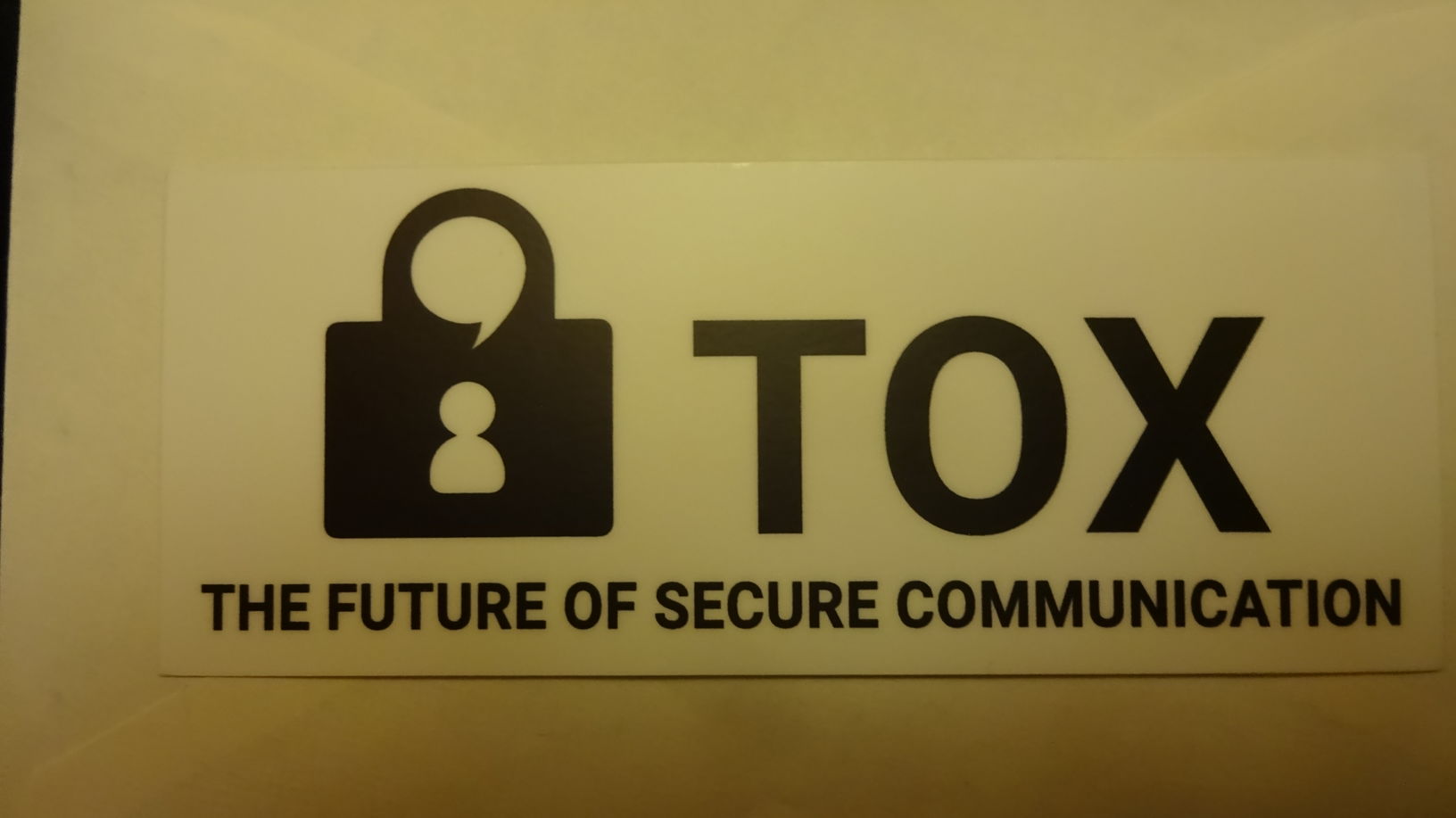
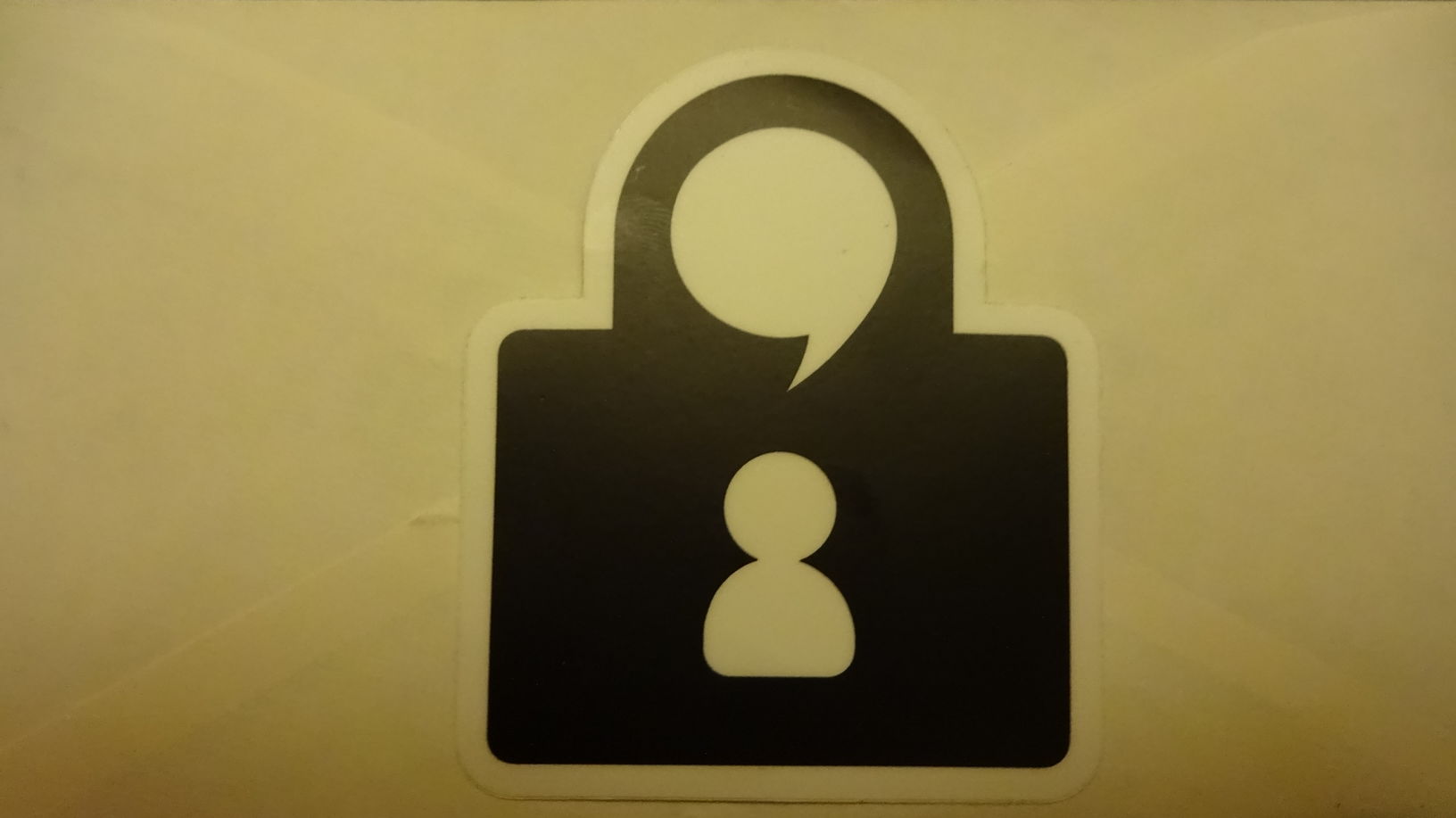
One thing was made very clear to me during the expo by attendees that came to the booth; Tox fills a niche in free software that very seriously needs filling. There is a need and want for something like Tox both at home and at the workplace by more people than you can count. Tox has seen some pretty rough times, and isn’t yet in the best of possible shapes, but we have incredible staying power, in large part because of the widespread desire for a drop-in Skype replacement that doesn’t abuse its end-users. Because of this staying power, we’re improving, and will always continue to do so.
In addition, a few of the things we already know were made more evident; Tox is not going to see wide adoption until we solve a few very big technical problems. Tox needs distributed solutions to the multi-device problem, the name-to-ID mapping problem (currently worked around with ToxMe), and the offline messaging problem. None of these problems are impossible to solve, they’re just very difficult to do correctly. We’ve already seen at least one proposal for a solution, but nothing that we can implement immediately; we need more manpower for research and implementation. On that note, if you (or someone you know) are a strong C programmer with experience in distributed systems, and you’re looking for a FOSS project to contribute to, drop us an email at leadership@tox.chat, and we’ll be glad to get you up to speed.
There isn’t much more for me to fill you in on, with regard to SCaLE. We spoke to very many people, and I think that we were successful at doing what we came to do.
All-in-all, SCaLE has left me refreshed. I’m glad that I’m able to start this year with a renewed vigor for The Tox Project, and I look forward to us continuing our mission to enable free and secure exchange of information via Tox.
Shout-outs to Digital Ocean, Snowdrift, Open Source Initiative, and all of the other awesome exhibitors that we got a chance to meet with at SCaLE. And a shout-out to my good friends whyt and swiss, for volunteering some of their time at our booth.
In case you didn’t catch them on our Facebook/Twitter, here are a few pictures from the event. They include Chuong Vu, an ObjcTox developer, Greg Mullen (grayhatter), the main developer of uTox, and myself (zero-one).
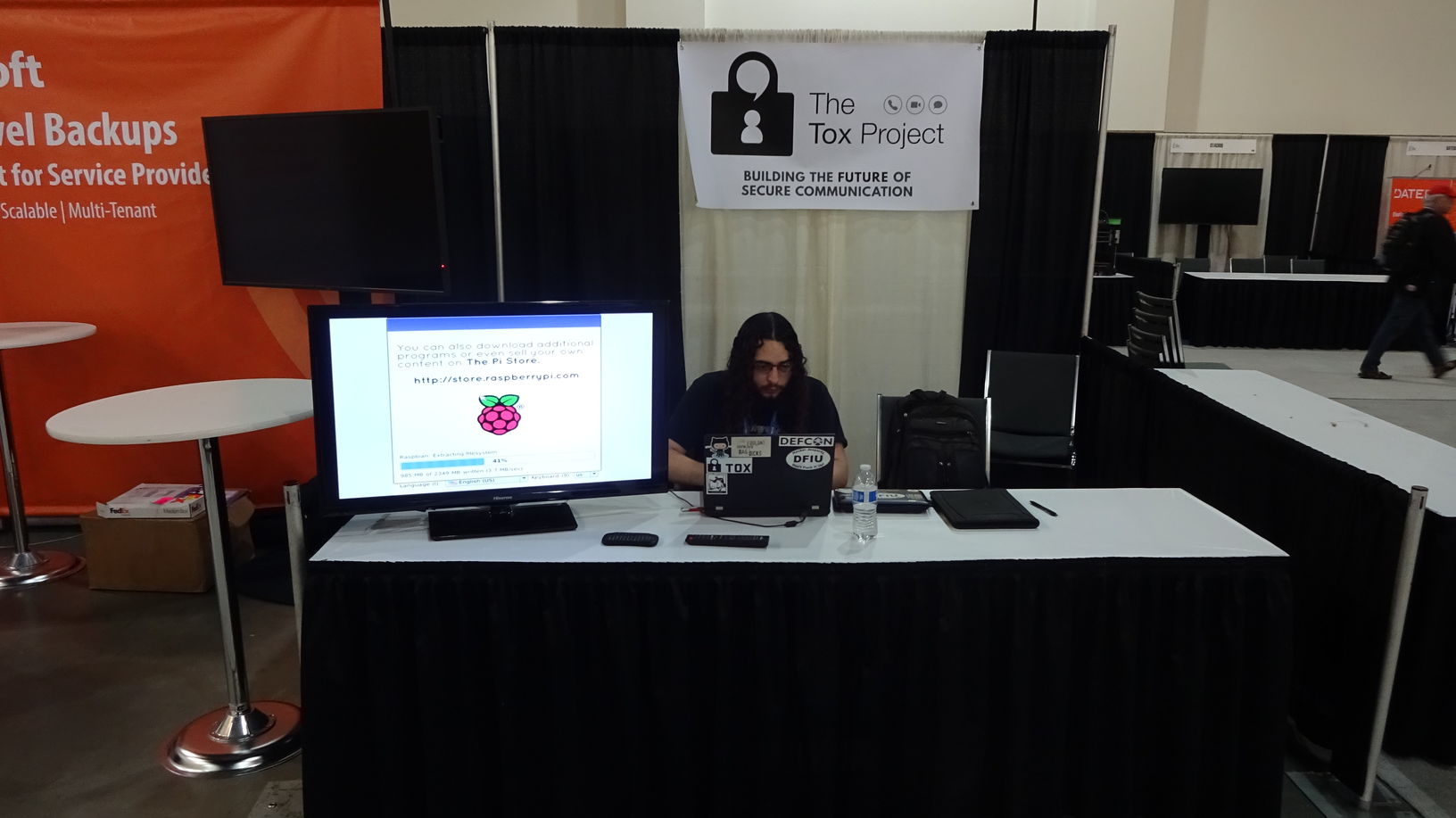
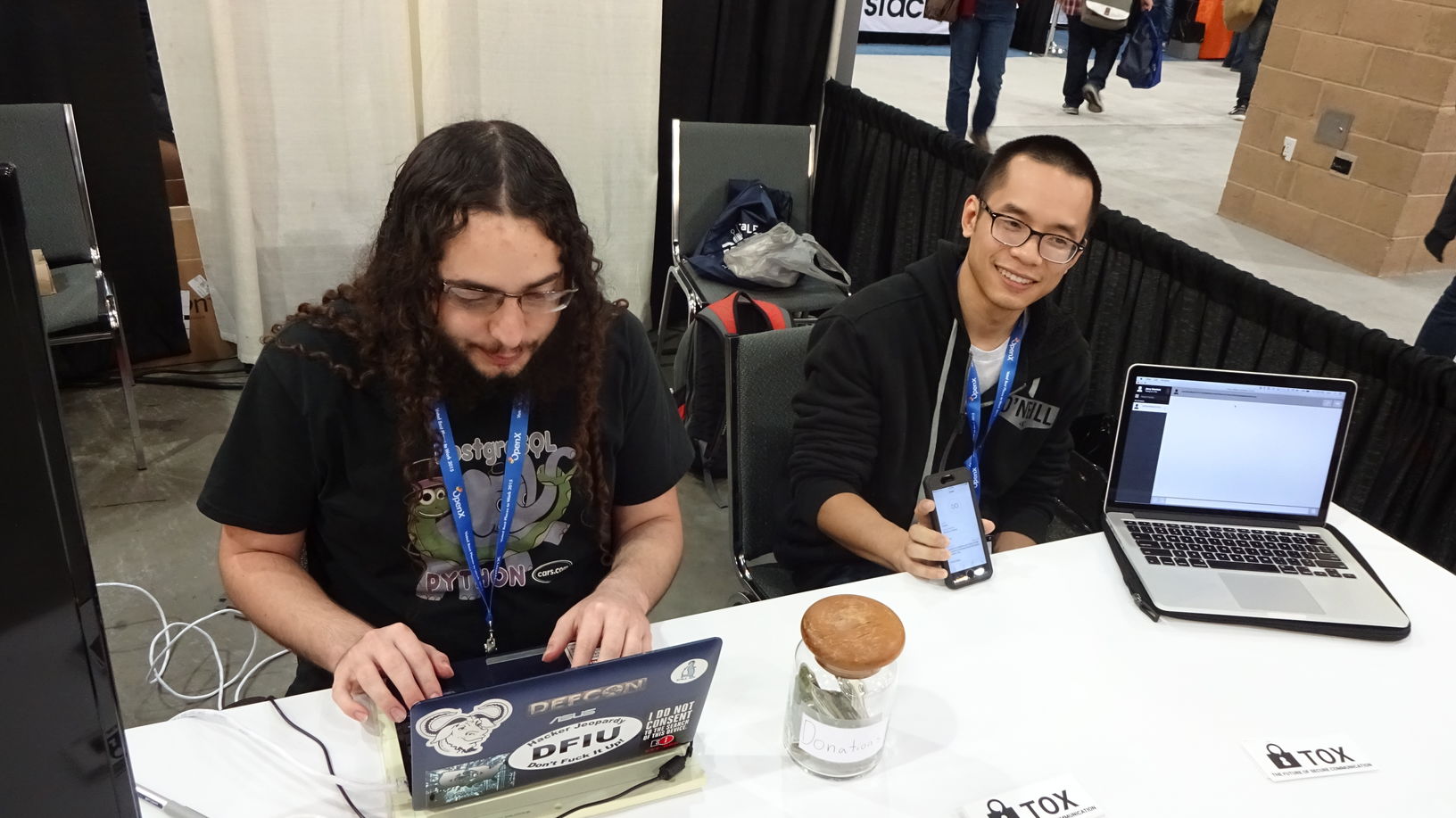
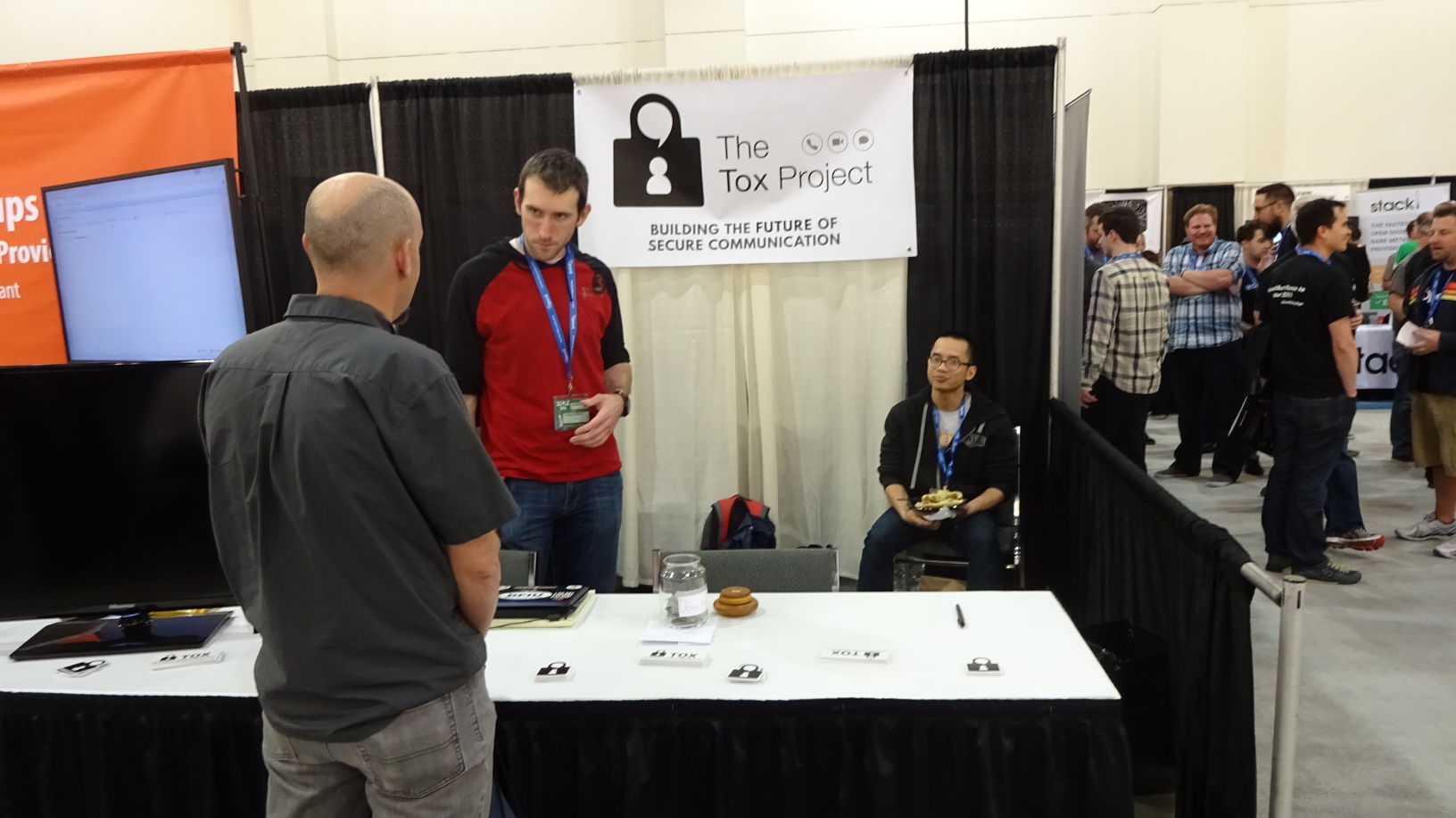
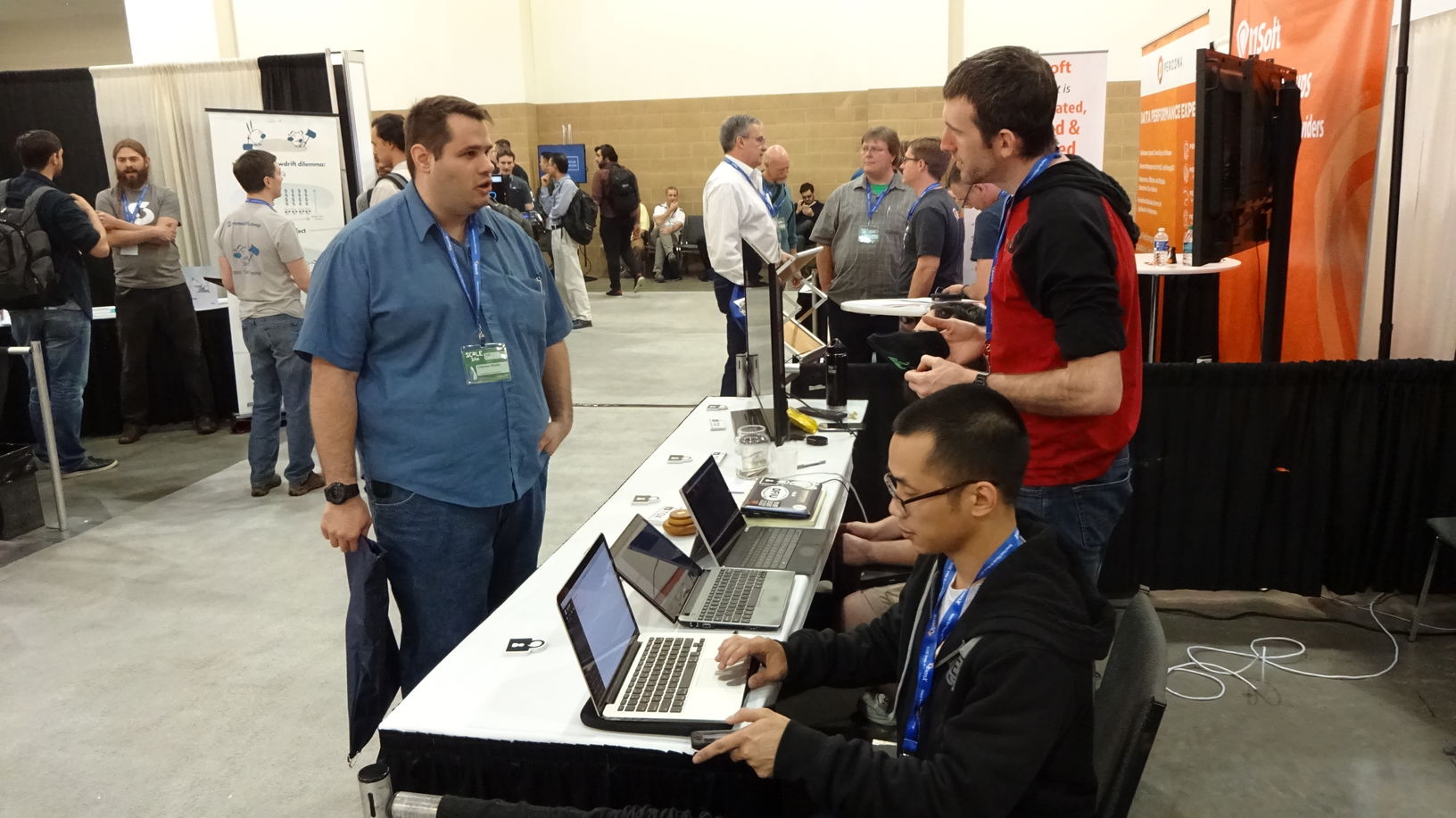
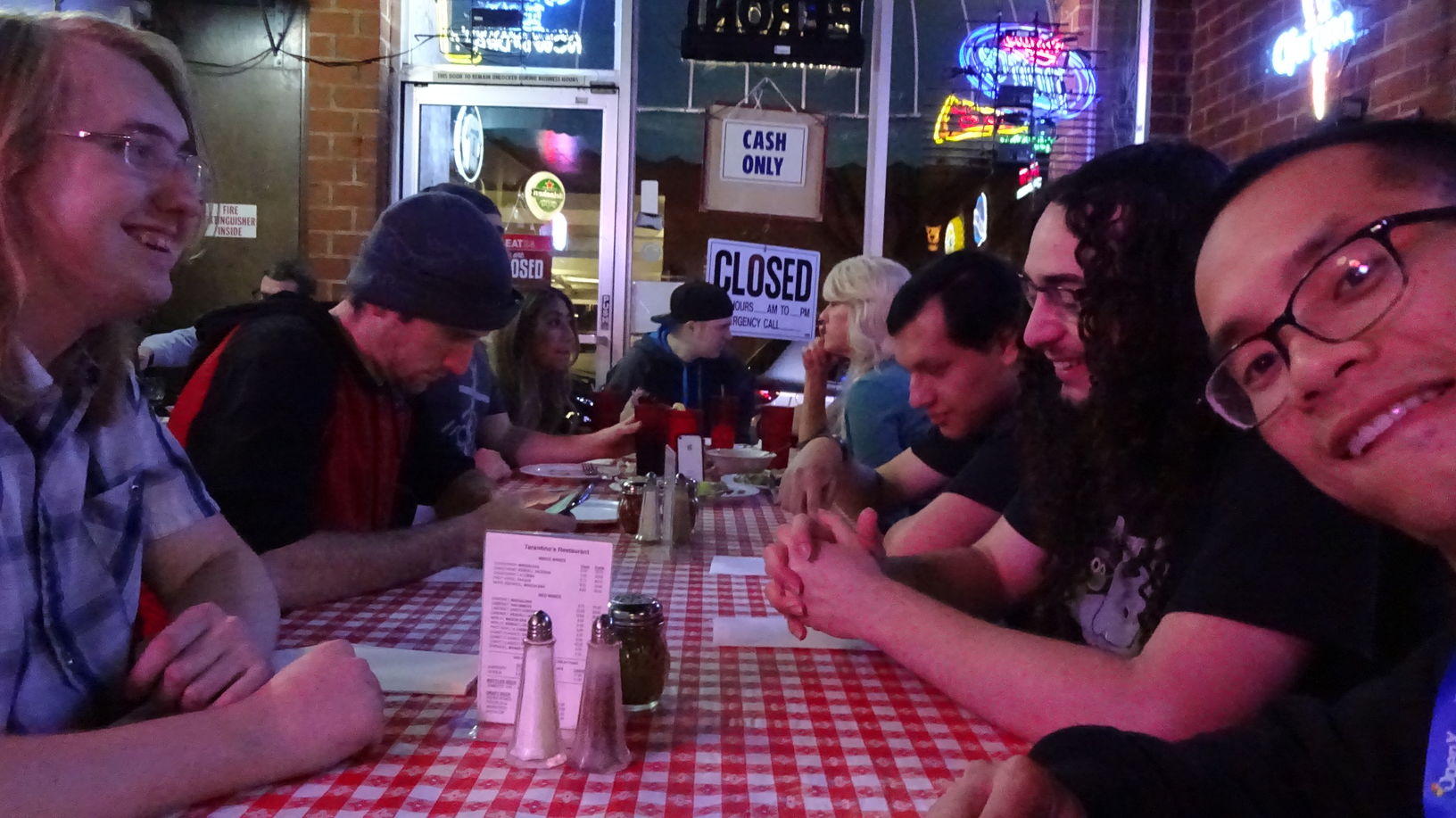

Looks like a whole lotta fun :) I hope to attend next year, maybe I can come say hello to everyone and thank them for their efforts.
you can cooperate with isotoxin creator.
hm, I’m used to check out this blog to be aware.
> the name-to-ID mapping problem
you know, you may see some torrents floating over there with that .tox field. torrents, binded with yet another blockhain with that strange thing which we used to call twisterd.
About offline messaging: the best solution is to allow desktop client to be a micro-server for mobile client. Just run desktop client in background on the computer and let it handle mobile messages. Also you can drastically lower mobile power consumption this way: right now android tox is totally unusable: phone NEVER sleeps with antox running. It kills the battery pretty quickly. And antox developers can’t do anything about it because tox works this way.
It is much better to offload heavy and power-hungry task to the desktop.
Good advice.
I would tell more. I suppose that microserver solution — is a pretty possible feature for a lot of things. And it is not really necessary to use PC. For example, people can use OpenWRT routers, RPi (or such SOC boards) as a micro-server “proxy” for a lot of things, including Tox. The idea is to have own micro-infrastructure connected to the global distributed network on the one side and own devices on the other.
On the other side, probably it is not really necessary to have literally “offline” messaging. It would be quite acceptable, as a compromise, to keep messages till the other party available to receive it. But AFAIU that already implemented in the current version (of qTox, at least).
i wish to have tox on my little openwrt router! with simple web gui.
then i can communicate to whole world from any pc/devices in my home network and dont have to have it run on every device! anyone can compile it for openwrt and make simple gui for it, please??